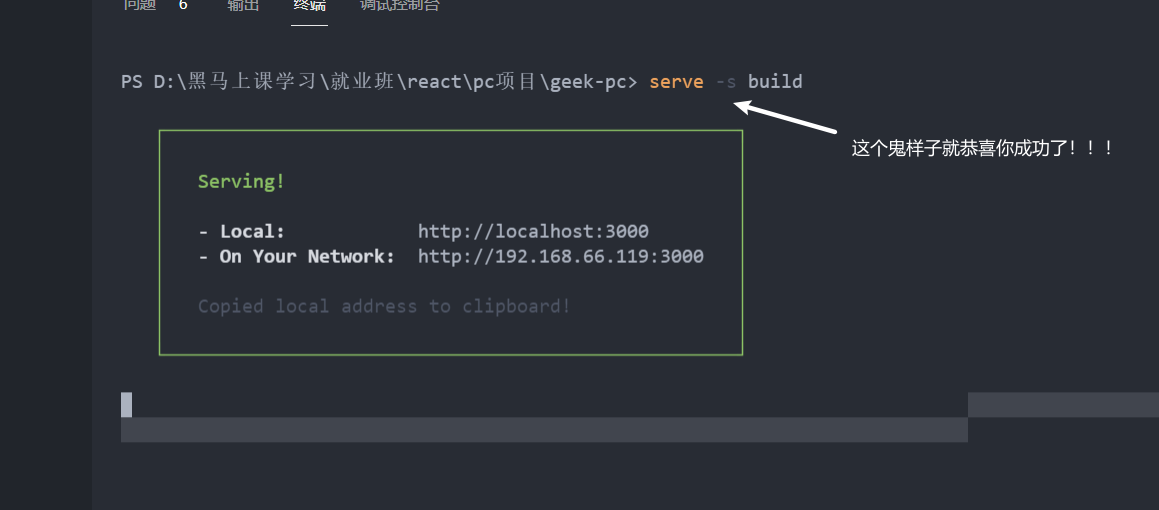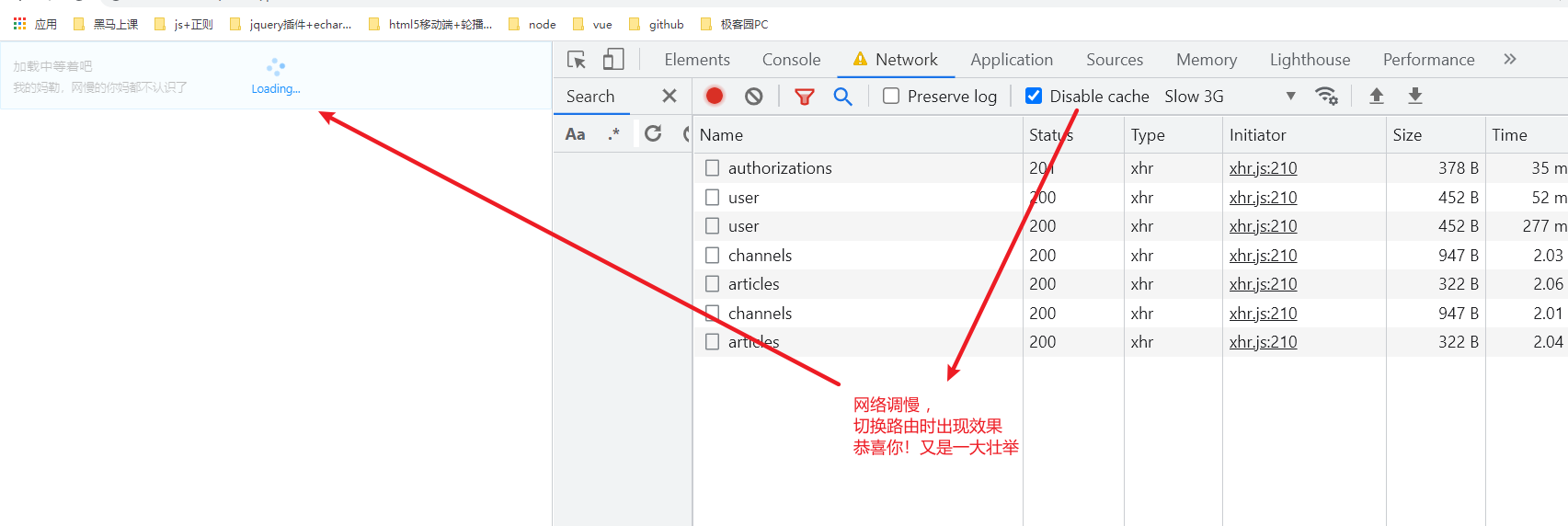1. View packaging commands

2. Run the package command
My is ` npm run build`

3. Project packaging and Optimization - Project local Preview
Objective: to be able to preview the packaged project locally
Steps:
1. Global installation of local service package: npm i -g serve. This package provides the serve command to start the local service
2. Execute the command: serve - S. / build in the project root directory, and start the server in the build directory
3. Access in the browser: http://localhost:3000/ Preview project

4. Project packaging and Optimization - packaging volume analysis
Objective: to be able to analyze the packaged volume of the project
Analysis description: only by analyzing the packaging volume can we know which part of the project is too large and how to optimize it
Steps:
-
Install package for analyzing package volume: NPM I source map Explorer
-
In the scripts tab of package.json, add the command to analyze the package volume
"scripts": { "analyze": "source-map-explorer 'build/static/js/*.js'", }Package the project: npm run build (if you have already packaged, you can omit this step)
-
Run analysis command: npm run analyze

5. Project packaging and Optimization - production environment optimization
Objective: the production environment (online) does not need redux debugging tools
store/index.js
If the environment is a production environment, only the middleware is reserved, otherwise the redux debugging tool is reserved to make logical judgment in the store
import { createStore, applyMiddleware } from 'redux'
import { composeWithDevTools } from 'redux-devtools-extension'
import thunk from 'redux-thunk'
import rootReducers from '@/store/reducers'
let middleware
// If the environment is a production environment, only the middleware is reserved, otherwise the redux debugging tool is reserved
process.env.NODE_ENV === 'production'
? (middleware = applyMiddleware(thunk))
: (middleware = composeWithDevTools(applyMiddleware(thunk)))
export default createStore(rootReducers, middleware)
After modification, it needs to be repackaged again

6. Project packaging and Optimization - route lazy loading
Objective: to realize the lazy loading of routing, and the introduction method adopts the lazy loading of routing
Implementation steps
1. In the App component, import the suspend component
2. Inside the Router, use the suspend component to wrap the component content
3. Provide the fallback attribute for the suspend component and specify the loading placeholder content
4. Import the lazy function and modify it to lazy loading mode to import the routing component
Core code:
First level routing App.js
//1. Introduce the tools needed for lazy loading of routes in react
import React, { lazy, Suspense } from 'react'
//Change how routing components are imported
const Login = lazy(() => import('./pages/Login'))
const Layout = lazy(() => import('./pages/Layout'))
//3. Wrap the route with depend. The incoming fallback attribute is the one you need to display when loading the incoming fallback
export default function App () {
return (
<Router history={history}>
<Switch>
<Suspense
fallback={
<Spin tip="Loading...">
<Alert
message="Load medium"
description="My mother, you don't know your mother anymore"
type="info"
/>
</Spin>
}>
<Redirect from="/" exact to="/login" />
<Route path="/login" component={Login} />
<AuthRoute path="/home" Component={Layout} />
<Route path="/home" component={Layout} />
<Route component={NotFound} />
</Suspense>
</Switch>
</Router>
)
}Secondary routing Layout/index:
const Home = lazy(() => import('../Home/Home.jsx'))
const Article = lazy(() => import('../Article/Article.jsx'))
const Publish = lazy(() => import('../Publish/Publish.jsx'))
7. Project packaging and Optimization - remove the console
1. Download the package to remove conloso
npm i terser-webpack-plugin@4.2.3
2. The following code is configured in the craco.config.js configuration file
const path = require('path')
const TerserPlugin = require('terser-webpack-plugin')
module.exports = {
// Identifying the @ symbol
webpack: {
alias: {
'@': path.join(__dirname, 'src')
}
},
// Remove console
plugins: [
new TerserPlugin({
terserOptions: {
compress: {
drop_console: process.env.NODE_ENV === 'production'
// Remove all contents of the console in the production environment
}
}
})
]
}
8. Project packaging and Optimization - configure CDN
Objective: to be able to use CDN optimization for third-party packages
1. Don't pack in when packing
2. Introduce external links in public/index.html
Analysis description: modify the webpack configuration through craco to realize CDN optimization
Core code:
In craco.config.js:
const path = require('path')
// HtmlWebpackPlugin
const { whenProd, getPlugin, pluginByName } = require('@craco/craco')
module.exports = {
webpack: {
alias: {
'@': path.join(__dirname, 'src')
},
configure: (webpackConfig) => {
let cdn = {
js: [],
css: []
}
// Configure webpack
whenProd(() => {
// Only in the production environment
webpackConfig.externals = {
react: 'React',
'react-dom': 'ReactDOM',
redux: 'Redux',
}
cdn = {
js: [
'https://cdn.bootcdn.net/ajax/libs/react/17.0.2/umd/react.production.min.js',
'https://cdn.bootcdn.net/ajax/libs/react-dom/17.0.2/umd/react-dom.production.min.js',
'https://cdn.bootcdn.net/ajax/libs/redux/4.1.0/redux.min.js'
],
css: []
}
})
const { isFound, match } = getPlugin(
webpackConfig,
pluginByName('HtmlWebpackPlugin')
)
if (isFound) {
// html plugin found
match.options.cdn = cdn
}
return webpackConfig
}
}
}